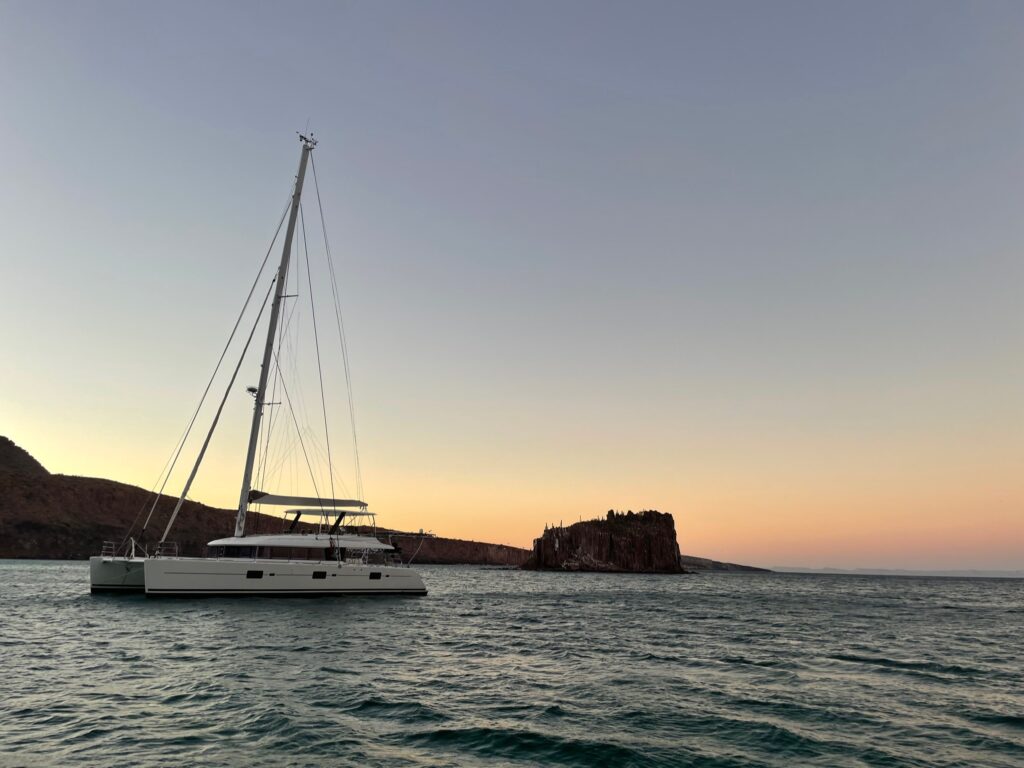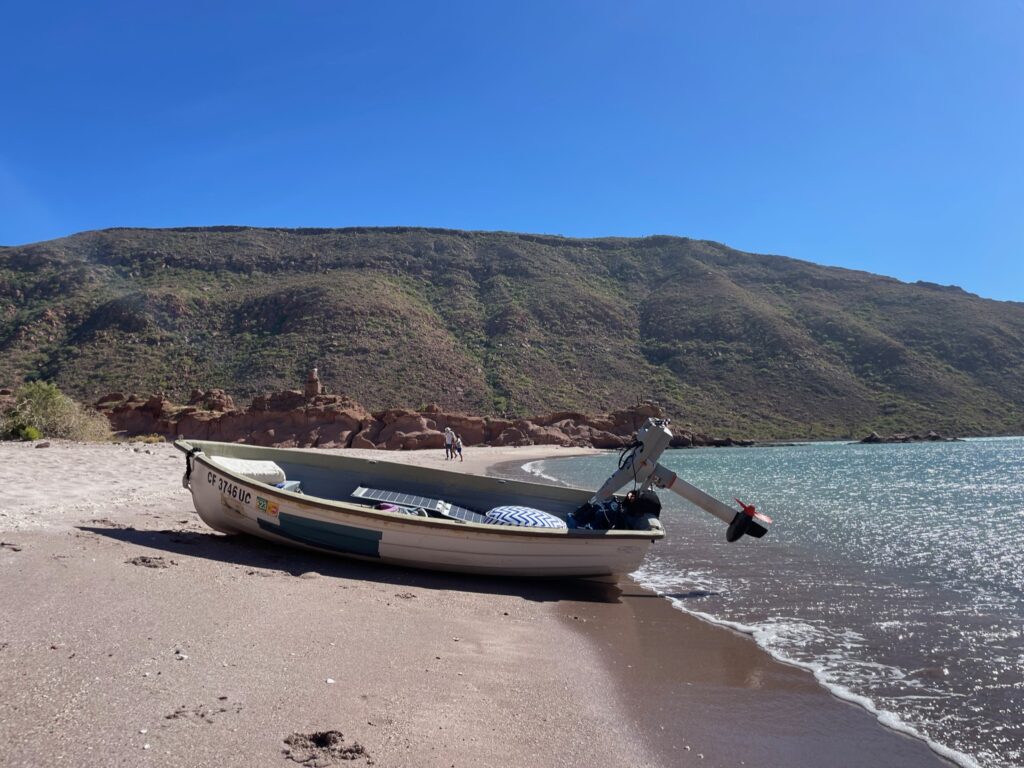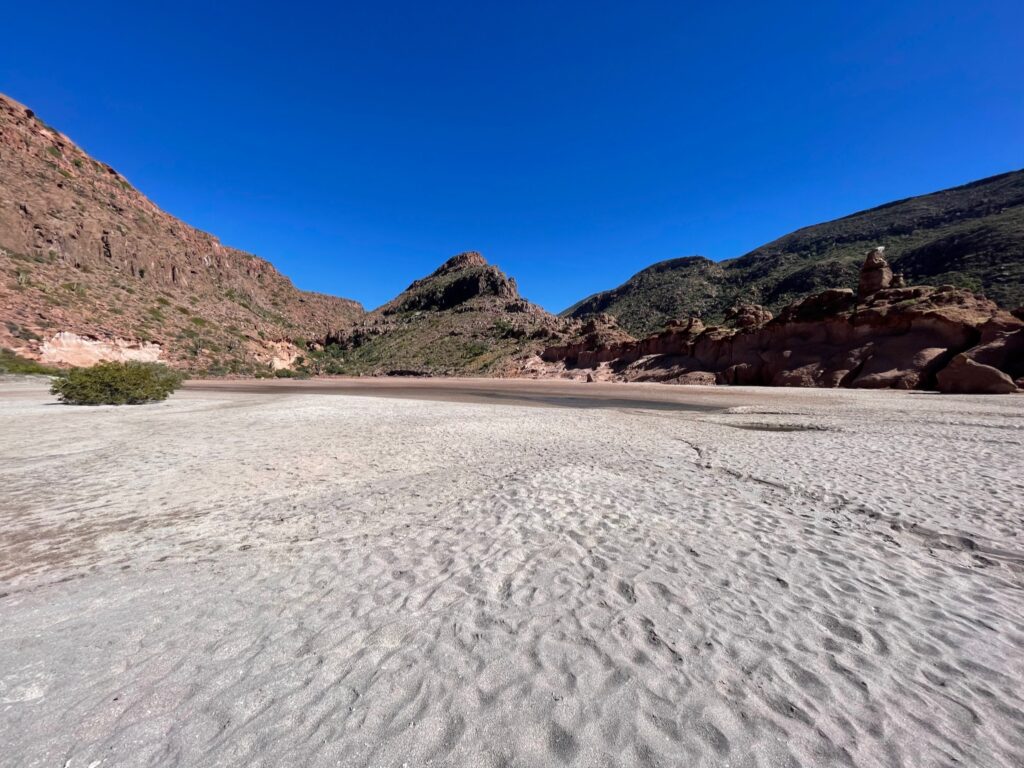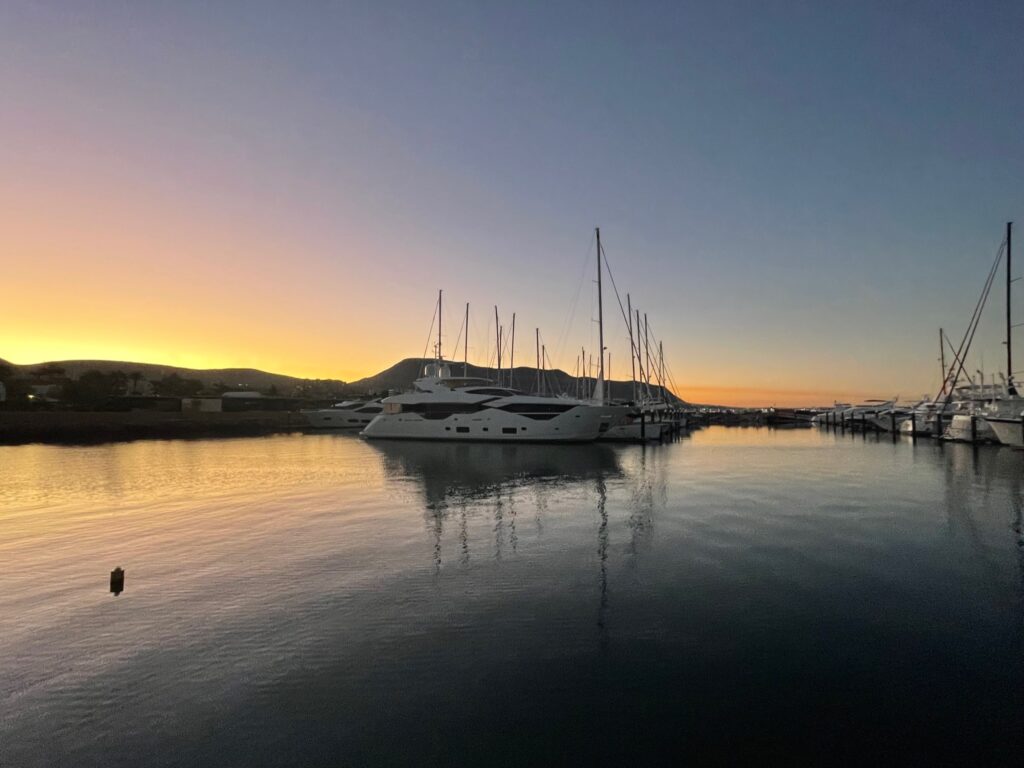Half moon was high in the sky as the sun rose on Saturday, January 14, 2023
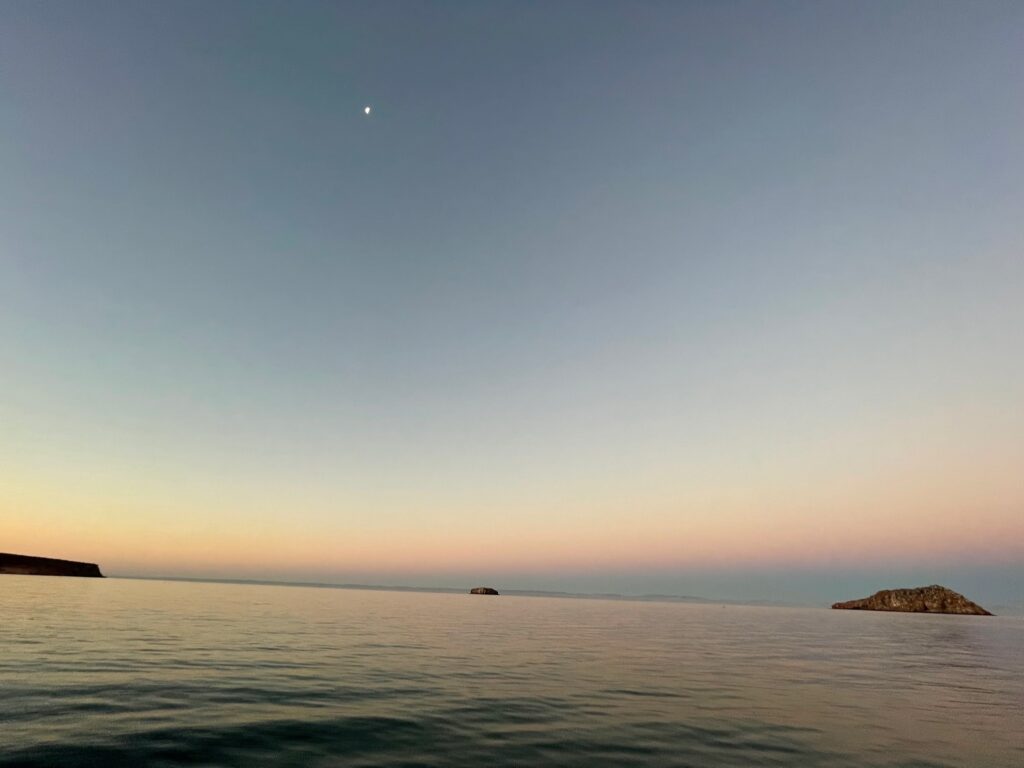
One of the reasons for wanting to come to this anchorage was so that we could visit Bahia San Gabriel, AKA The Forbidden Anchorage. It’s been nicknamed that because it is forbidden for boats to anchor there. We’ve also gotten the impression that the tourist panga day-trips and camping groups aren’t allowed to go to this beach, either. We have no details as to why this area had been closed off in recent years; all we found was that this bay used to be rich with oysters and once upon a time there was a pearl fishery.
But there was a hiking trail that goes to Bahia San Gabriel from Bonanza, and dinghies were allowed to go there, so visiting the beach is to allowed. Our dinghy was too slow to make the 3.2 nm trek, so Moin picked us up in their fast dinghy at 1000. Erin Skye went, too.
When we rounded the corner of the finger into Bahia San Gabriel, we were surprised to see that there was a boat anchored there. We figured it was only a matter of time before the park ranger ran them off. We had to anchor the dinghy pretty far away from shore because the water was so shallow. Erin Skye managed to get their dinghy in closer than we did.



